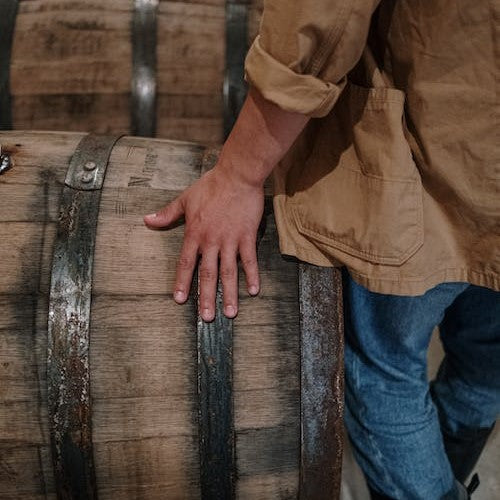Craft whiskey is on the upswing, and with it, small-batch distillers are rediscovering long-forgotten methods of making whiskey with bold, original flavors. Traditional ways of creating whiskey, such as floor malting, growing heirloom grains, and distilling in pot stills, are being rediscovered and implemented by craft distillers.
Craft whiskey distillers have been instrumental in bringing back floor malting as a means of producing whiskey. Barley used in whiskey manufacturing is traditionally prepared by floor malting. To germinate barley, one must first soak the grains in water and then spread them out on a floor. Malt, used in distilling whiskey, is made by drying and roasting the sprouts.
Before the advent of more efficient industrial malting processes in the late 19th century, floor malting was a common technique. But these days, many producers of craft whiskey are returning to floor malting in order to take advantage of the distinctive flavor it imparts. Floor-malted barley can yield a richer and more nuanced flavor profile in the final whiskey, but it is typically more expensive than industrially malted barley due to the time and labor-intensive nature of the process.
Craft distillers are also rediscovering heirloom grain cultivation, another long-lost practice. Rare and unusual, heirloom grains are old grain kinds that have been kept alive over the years. Due to low yields or difficulty in cultivation, many grains that were previously commonly employed in whiskey manufacturing have since fallen out of favor.
Craft distillers, however, are increasingly using these grains due to their distinctive flavor profiles and historical significance to the development of whiskey. Whiskey made from heirloom grains like Red Fife wheat, Spelt, and Purple Corn often has a richer flavor and more distinctive personality than whiskey made from more common varieties of grain. Whiskeys made from these rare grain strains are a nod to the past and an experience of the past in the present.
Craft whiskey producers are also rediscovering the benefits of traditional pot still distillation. Whiskey produced on a copper pot still is known for having a more nuanced flavor profile since more of the grain's unique characteristics made it into the finished product. Pot stills allow distillers to create whiskey in smaller batches, focusing on quality rather than quantity, as is the case with column stills, which are employed in large-scale industrial whiskey manufacturing.
Traditional pot still distillation requires more man hours than column stills, but the end result can be customized more precisely. Distillers may give their whiskey a distinct flavor that is difficult to imitate by keeping a close eye on the temperature and the velocity of flow.
However, there are difficulties associated with reviving these ancient practices. One reason why some of these methods can be costly is that they take a long time and necessitate a lot of manual labor. Craft whiskey is typically more expensive than mass-produced whiskey because of this markup.
Furthermore, many of these forgotten methods went missing for good reason. Maybe now there are better, cheaper ways to make whiskey that have replaced them. Craft whiskey distillers must strike a delicate balance between preserving traditional methods and building a profitable enterprise.
Finally, educating end users is a significant obstacle. Craft whiskey and the methods used to make it are becoming increasingly popular, yet many drinkers are still unfamiliar with the subtle but significant differences between craft and commercial whiskey. It is the responsibility of artisan distillers to inform their clients about the special ingredients and processes that go into making their whiskey, so that they can appreciate the added cost.
Despite these difficulties, reviving ancient whiskey-making practices has considerable payoffs. Craft distillers can set themselves apart in a congested industry by developing bold and original flavors. They have the potential to provide customers with a sense of history and originality not typically found in mass-produced whiskey. They can help preserve cultural knowledge and pass it on to future generations of distillers by rediscovering and employing these long-forgotten methods.
Finally, craft whiskey distillers are rediscovering long-forgotten methods from the past in order to create their own singular tastes. These methods, like as floor malting, heirloom grain farming, and traditional pot still distillation, provide a link to the past and an authenticity rarely found in mass-produced whiskey. The gains of conserving these forgotten techniques much outweigh the efforts required to do so. Craft distillers may stand out in a crowded industry, give modern drinkers a taste of the past, and safeguard the survival of time-honored practices by teaching them to the next generation.
